Barry Haddow
EuroLLM-9B: Technical Report
Jun 04, 2025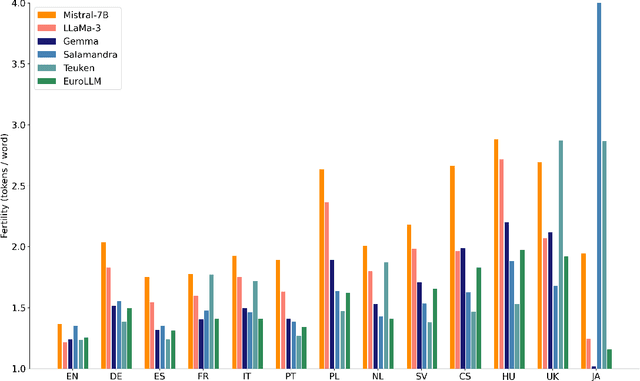
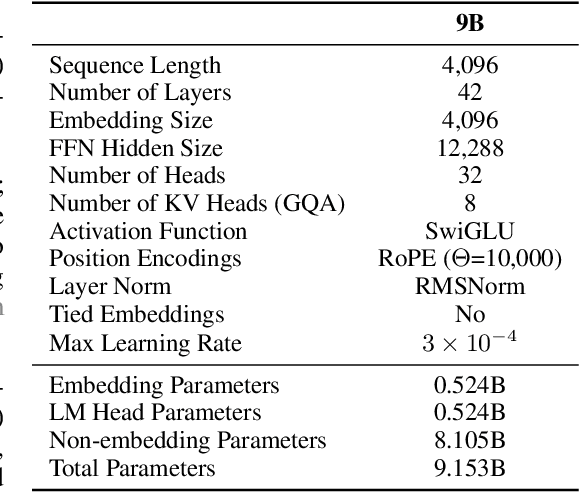
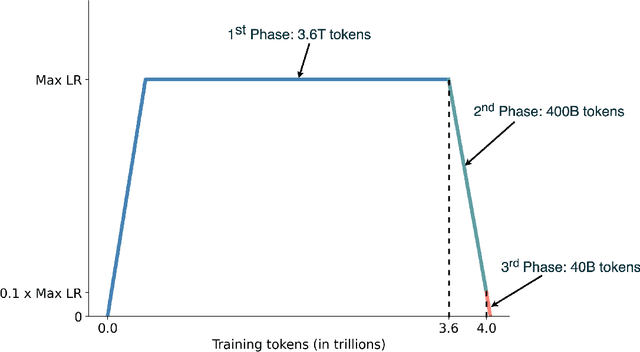
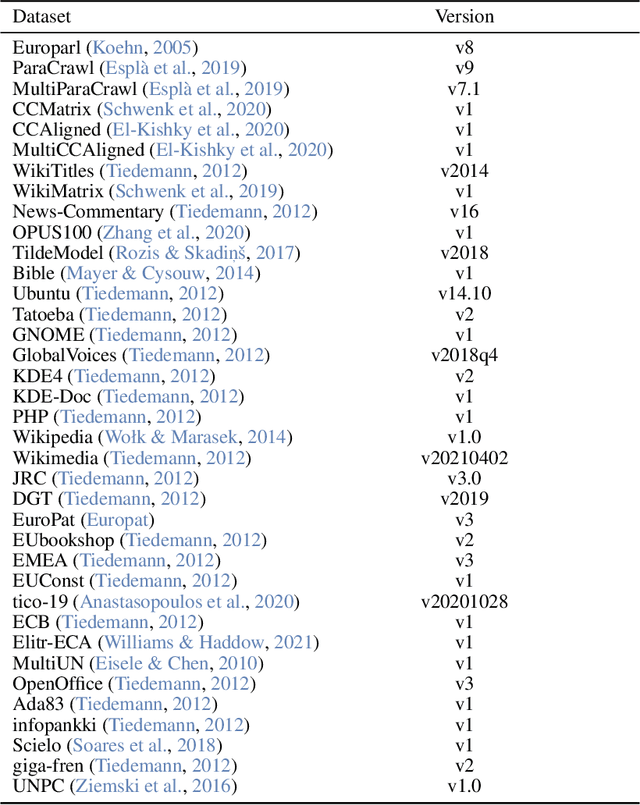
Abstract:This report presents EuroLLM-9B, a large language model trained from scratch to support the needs of European citizens by covering all 24 official European Union languages and 11 additional languages. EuroLLM addresses the issue of European languages being underrepresented and underserved in existing open large language models. We provide a comprehensive overview of EuroLLM-9B's development, including tokenizer design, architectural specifications, data filtering, and training procedures. We describe the pre-training data collection and filtering pipeline, including the creation of EuroFilter, an AI-based multilingual filter, as well as the design of EuroBlocks-Synthetic, a novel synthetic dataset for post-training that enhances language coverage for European languages. Evaluation results demonstrate EuroLLM-9B's competitive performance on multilingual benchmarks and machine translation tasks, establishing it as the leading open European-made LLM of its size. To support open research and adoption, we release all major components of this work, including the base and instruction-tuned models, the EuroFilter classifier, and the synthetic post-training dataset.
HBO: Hierarchical Balancing Optimization for Fine-Tuning Large Language Models
May 18, 2025Abstract:Fine-tuning large language models (LLMs) on a mixture of diverse datasets poses challenges due to data imbalance and heterogeneity. Existing methods often address these issues across datasets (globally) but overlook the imbalance and heterogeneity within individual datasets (locally), which limits their effectiveness. We introduce Hierarchical Balancing Optimization (HBO), a novel method that enables LLMs to autonomously adjust data allocation during fine-tuning both across datasets (globally) and within each individual dataset (locally). HBO employs a bilevel optimization strategy with two types of actors: a Global Actor, which balances data sampling across different subsets of the training mixture, and several Local Actors, which optimizes data usage within each subset based on difficulty levels. These actors are guided by reward functions derived from the LLM's training state, which measure learning progress and relative performance improvement. We evaluate HBO on three LLM backbones across nine diverse tasks in multilingual and multitask setups. Results show that HBO consistently outperforms existing baselines, achieving significant accuracy gains. Our in-depth analysis further demonstrates that both the global actor and local actors of HBO effectively adjust data usage during fine-tuning. HBO provides a comprehensive solution to the challenges of data imbalance and heterogeneity in LLM fine-tuning, enabling more effective training across diverse datasets.
ExpertSteer: Intervening in LLMs through Expert Knowledge
May 18, 2025

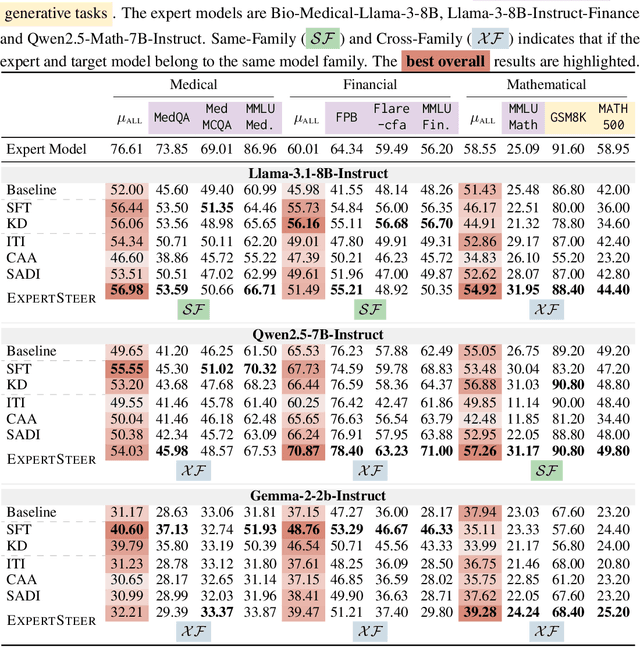
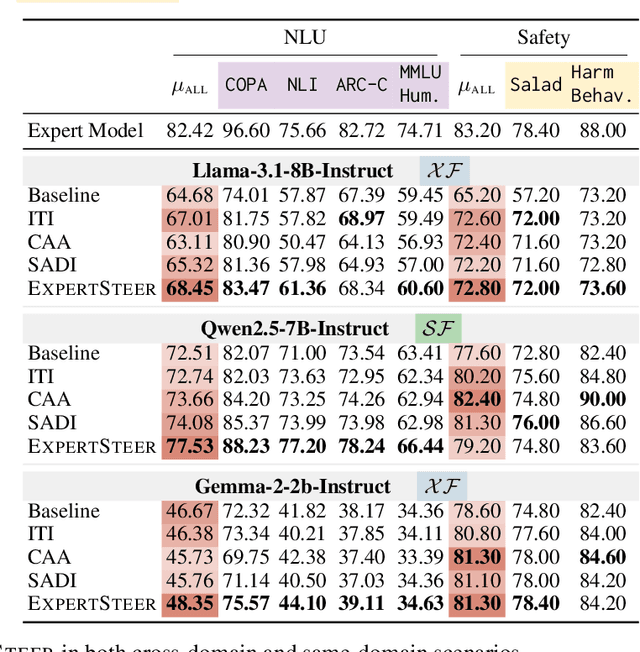
Abstract:Large Language Models (LLMs) exhibit remarkable capabilities across various tasks, yet guiding them to follow desired behaviours during inference remains a significant challenge. Activation steering offers a promising method to control the generation process of LLMs by modifying their internal activations. However, existing methods commonly intervene in the model's behaviour using steering vectors generated by the model itself, which constrains their effectiveness to that specific model and excludes the possibility of leveraging powerful external expert models for steering. To address these limitations, we propose ExpertSteer, a novel approach that leverages arbitrary specialized expert models to generate steering vectors, enabling intervention in any LLMs. ExpertSteer transfers the knowledge from an expert model to a target LLM through a cohesive four-step process: first aligning representation dimensions with auto-encoders to enable cross-model transfer, then identifying intervention layer pairs based on mutual information analysis, next generating steering vectors from the expert model using Recursive Feature Machines, and finally applying these vectors on the identified layers during inference to selectively guide the target LLM without updating model parameters. We conduct comprehensive experiments using three LLMs on 15 popular benchmarks across four distinct domains. Experiments demonstrate that ExpertSteer significantly outperforms established baselines across diverse tasks at minimal cost.
Improving Multilingual Retrieval-Augmented Language Models through Dialectic Reasoning Argumentations
Apr 07, 2025Abstract:Retrieval-augmented generation (RAG) is key to enhancing large language models (LLMs) to systematically access richer factual knowledge. Yet, using RAG brings intrinsic challenges, as LLMs must deal with potentially conflicting knowledge, especially in multilingual retrieval, where the heterogeneity of knowledge retrieved may deliver different outlooks. To make RAG more analytical, critical and grounded, we introduce Dialectic-RAG (DRAG), a modular approach guided by Argumentative Explanations, i.e., structured reasoning process that systematically evaluates retrieved information by comparing, contrasting, and resolving conflicting perspectives. Given a query and a set of multilingual related documents, DRAG selects and exemplifies relevant knowledge for delivering dialectic explanations that, by critically weighing opposing arguments and filtering extraneous content, clearly determine the final response. Through a series of in-depth experiments, we show the impact of our framework both as an in-context learning strategy and for constructing demonstrations to instruct smaller models. The final results demonstrate that DRAG significantly improves RAG approaches, requiring low-impact computational effort and providing robustness to knowledge perturbations.
Multilingual Retrieval-Augmented Generation for Knowledge-Intensive Task
Apr 04, 2025Abstract:Retrieval-augmented generation (RAG) has become a cornerstone of contemporary NLP, enhancing large language models (LLMs) by allowing them to access richer factual contexts through in-context retrieval. While effective in monolingual settings, especially in English, its use in multilingual tasks remains unexplored. This paper investigates the effectiveness of RAG across multiple languages by proposing novel approaches for multilingual open-domain question-answering. We evaluate the performance of various multilingual RAG strategies, including question-translation (tRAG), which translates questions into English before retrieval, and Multilingual RAG (MultiRAG), where retrieval occurs directly across multiple languages. Our findings reveal that tRAG, while useful, suffers from limited coverage. In contrast, MultiRAG improves efficiency by enabling multilingual retrieval but introduces inconsistencies due to cross-lingual variations in the retrieved content. To address these issues, we propose Crosslingual RAG (CrossRAG), a method that translates retrieved documents into a common language (e.g., English) before generating the response. Our experiments show that CrossRAG significantly enhances performance on knowledge-intensive tasks, benefiting both high-resource and low-resource languages.
An Expanded Massive Multilingual Dataset for High-Performance Language Technologies
Mar 13, 2025Abstract:Training state-of-the-art large language models requires vast amounts of clean and diverse textual data. However, building suitable multilingual datasets remains a challenge. In this work, we present HPLT v2, a collection of high-quality multilingual monolingual and parallel corpora. The monolingual portion of the data contains 8T tokens covering 193 languages, while the parallel data contains 380M sentence pairs covering 51 languages. We document the entire data pipeline and release the code to reproduce it. We provide extensive analysis of the quality and characteristics of our data. Finally, we evaluate the performance of language models and machine translation systems trained on HPLT v2, demonstrating its value.
Demystifying Multilingual Chain-of-Thought in Process Reward Modeling
Feb 18, 2025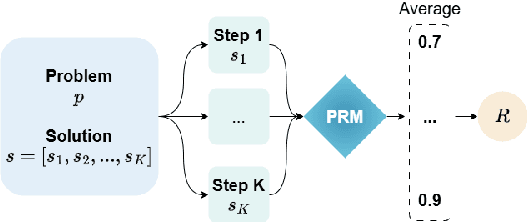
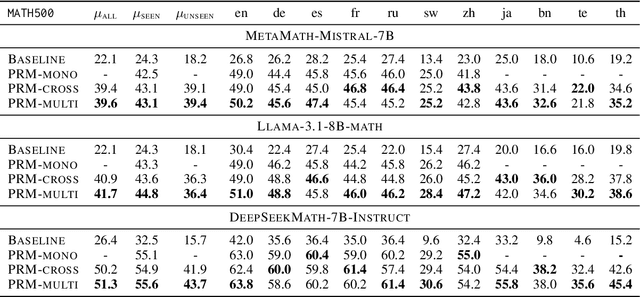
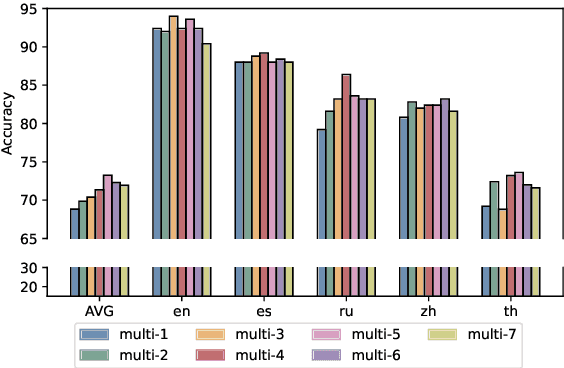

Abstract:Large language models (LLMs) are designed to perform a wide range of tasks. To improve their ability to solve complex problems requiring multi-step reasoning, recent research leverages process reward modeling to provide fine-grained feedback at each step of the reasoning process for reinforcement learning (RL), but it predominantly focuses on English. In this paper, we tackle the critical challenge of extending process reward models (PRMs) to multilingual settings. To achieve this, we train multilingual PRMs on a dataset spanning seven languages, which is translated from English. Through comprehensive evaluations on two widely used reasoning benchmarks across 11 languages, we demonstrate that multilingual PRMs not only improve average accuracy but also reduce early-stage reasoning errors. Furthermore, our results highlight the sensitivity of multilingual PRMs to both the number of training languages and the volume of English data, while also uncovering the benefits arising from more candidate responses and trainable parameters. This work opens promising avenues for robust multilingual applications in complex, multi-step reasoning tasks. In addition, we release the code to foster research along this line.
Prepending or Cross-Attention for Speech-to-Text? An Empirical Comparison
Jan 04, 2025



Abstract:Following the remarkable success of Large Language Models (LLMs) in NLP tasks, there is increasing interest in extending their capabilities to speech -- the most common form in communication. To integrate speech into LLMs, one promising approach is dense feature prepending (DFP) which prepends the projected speech representations to the textual representations, allowing end-to-end training with the speech encoder. However, DFP typically requires connecting a text decoder to a speech encoder. This raises questions about the importance of having a sophisticated speech encoder for DFP, and how its performance compares with a standard encoder-decoder (i.e. cross-attention) architecture. In order to perform a controlled architectural comparison, we train all models from scratch, rather than using large pretrained models, and use comparable data and parameter settings, testing speech-to-text recognition (ASR) and translation (ST) on MuST-C v1.0 and CoVoST2 datasets. We study the influence of a speech encoder in DFP. More importantly, we compare DFP and cross-attention under a variety of configurations, such as CTC compression, sequence-level knowledge distillation, generation speed and GPU memory footprint on monolingual, bilingual and multilingual models. Despite the prevalence of DFP over cross-attention, our overall results do not indicate a clear advantage of DFP.
Generics are puzzling. Can language models find the missing piece?
Dec 15, 2024Abstract:Generic sentences express generalisations about the world without explicit quantification. Although generics are central to everyday communication, building a precise semantic framework has proven difficult, in part because speakers use generics to generalise properties with widely different statistical prevalence. In this work, we study the implicit quantification and context-sensitivity of generics by leveraging language models as models of language. We create ConGen, a dataset of 2873 naturally occurring generic and quantified sentences in context, and define p-acceptability, a metric based on surprisal that is sensitive to quantification. Our experiments show generics are more context-sensitive than determiner quantifiers and about 20% of naturally occurring generics we analyze express weak generalisations. We also explore how human biases in stereotypes can be observed in language models.
Findings of the IWSLT 2024 Evaluation Campaign
Nov 07, 2024Abstract:This paper reports on the shared tasks organized by the 21st IWSLT Conference. The shared tasks address 7 scientific challenges in spoken language translation: simultaneous and offline translation, automatic subtitling and dubbing, speech-to-speech translation, dialect and low-resource speech translation, and Indic languages. The shared tasks attracted 18 teams whose submissions are documented in 26 system papers. The growing interest towards spoken language translation is also witnessed by the constantly increasing number of shared task organizers and contributors to the overview paper, almost evenly distributed across industry and academia.
 Add to Chrome
Add to Chrome Add to Firefox
Add to Firefox Add to Edge
Add to Edge